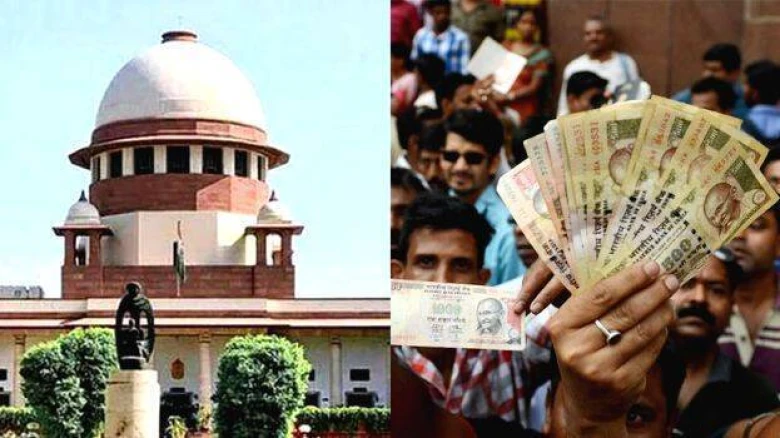The judgment was delivered by a five-judge Constitution bench led by Justice S. A. Nazeer when the supreme court resumed following its winter recess.
Digital Desk: The Supreme Court on Monday released its verdict on several petitions challenging the central government's 2016 demonetisation initiative, which prohibited currency notes with denominations of Rs 1,000 and Rs 500. The Supreme Court upheld the government's decision to implement demonetisation.
According to Justice B R Gavai, the Centre's decision-making process cannot be defective because the Reserve Bank of India (RBI) and the government held discussions.
The Supreme Court rejected the majority of arguments made in opposition to the Centre's decision to implement demonetisation, holding that it made no difference whether or not the Centre's goal was attained. The Supreme Court ruled that the November 8, 2016 notification about demonetization was legal and passed the proportionality test.
The judgment was delivered by a five-judge Constitution bench led by Justice S. A. Nazeer when the supreme court resumed following its winter recess. Justices B R Gavai, B V Nagarathna, A S Bopanna, and V Ramasubramanian were also on the bench.
Senior lawyers P Chidambaram and Shyam Divan representing the petitioners, as well as Attorney General R Venkataramani representing the RBI, have already testified before the top court. It had requested that the Centre and RBI record any relevant documents about the 2016 judgment.
The petitioners' lawyers had referred to the Center's decision to ban currency notes as gravely flawed. They had made the case that any proposal of legal tender could only be started by the government on the advice of the central board of the RBI, and not on its own.
The RBI had acknowledged in its submissions that the decision to demonetise some currency had led to "temporary hardships," but that those pains were also a crucial part of the process of nation-building. There was, however, a system in place for dealing with issues when they emerged.
In an affidavit submitted before the SC, the Centre described the note ban as a "well-considered" move. It also stated that the action was a part of a bigger plan to combat the threat posed by counterfeit money, black market transactions, tax evasion, and terrorism funding.

Leave A Comment